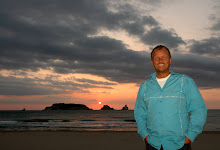COLOUR TROUBLE ??

Luxembourg's member of parliament, Mr Michel Wolter desperately wants to change the Luxembourg's natioal tricolour flag.
The flag is too much like that of The Netherlands.
Radio RTL Luxembourg recently held a poll among listeners and 90% agreed with and supports Wolter's opinion.
OK,.. Wolter is right....
The two flags are quite identical, but what a fuss....
According to "holy texts," the Netherlands' flag has a 2:3 ratio while the classical ratio of Luxembourg's is 3:5. The problem arises because Luxembourg's flag is also used with 1:2 ratio and (worse), a 2:3 one, the same of the Netherlands' flag! Moreover, the nuance of blue is defined as "cobalt blue" for both the flags, even if in Luxembourg's flag it is often lighter than in that of the Netherlands'.
Until 1890, the king of the Netherlands and the grand-duke of Letzeburg were one person. I'd guess that the flag colors come from the coat-of-arms of Letzeburg: barry argent and azure, a lion gules.
The flags are of the Netherlands and of Luxembourg (as they are known internationally) are similar, but not the same, and it's just a coincidence, nothing to do with having any common origin. As Anton Sherwood pointed out the colours of Luxembourg are derived from the coat of arms. Recently the blue has been defined as 299 in the Pantone Matching System, unlike the 286 blue in the flag of the Netherlands. It was laid down some time ago that the proportions of the flag would be 3:5 or 1:2, unlike the Dutch flag, which is always 2:3.However, because the flags still look similar at a distance, the Luxemburgers have a distinct flag for use on civil vessels on the Rhine and elsewhere. It is a banner of the arms.
There is no international system for avoiding flag similarities, and indeed at the United Nations itself there are two pairs of identical flags: Chad and Romania and Monaco and Indonesia. Chad and Romania are absolutely identical, and whilst Monaco and Indonesia have different proportions, this refinement is lost at the UN, where all flags are rendered equal. There have been several occasions in the past when different countries have had similar flags. Until the establishment of the World Vexillological Authority we have to put up with it!
The flag is too much like that of The Netherlands.
Radio RTL Luxembourg recently held a poll among listeners and 90% agreed with and supports Wolter's opinion.
OK,.. Wolter is right....
The two flags are quite identical, but what a fuss....
According to "holy texts," the Netherlands' flag has a 2:3 ratio while the classical ratio of Luxembourg's is 3:5. The problem arises because Luxembourg's flag is also used with 1:2 ratio and (worse), a 2:3 one, the same of the Netherlands' flag! Moreover, the nuance of blue is defined as "cobalt blue" for both the flags, even if in Luxembourg's flag it is often lighter than in that of the Netherlands'.
Until 1890, the king of the Netherlands and the grand-duke of Letzeburg were one person. I'd guess that the flag colors come from the coat-of-arms of Letzeburg: barry argent and azure, a lion gules.
The flags are of the Netherlands and of Luxembourg (as they are known internationally) are similar, but not the same, and it's just a coincidence, nothing to do with having any common origin. As Anton Sherwood pointed out the colours of Luxembourg are derived from the coat of arms. Recently the blue has been defined as 299 in the Pantone Matching System, unlike the 286 blue in the flag of the Netherlands. It was laid down some time ago that the proportions of the flag would be 3:5 or 1:2, unlike the Dutch flag, which is always 2:3.However, because the flags still look similar at a distance, the Luxemburgers have a distinct flag for use on civil vessels on the Rhine and elsewhere. It is a banner of the arms.
There is no international system for avoiding flag similarities, and indeed at the United Nations itself there are two pairs of identical flags: Chad and Romania and Monaco and Indonesia. Chad and Romania are absolutely identical, and whilst Monaco and Indonesia have different proportions, this refinement is lost at the UN, where all flags are rendered equal. There have been several occasions in the past when different countries have had similar flags. Until the establishment of the World Vexillological Authority we have to put up with it!
Enjoy,
HK


0 Comments:
Post a Comment
<< Home